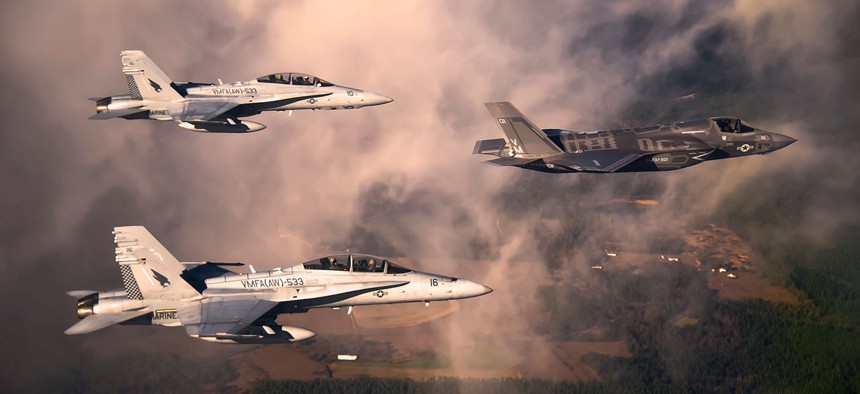The Marines Have ‘Too Many Hornets’
The commandant wants to retire beaten-up F/A-18s more quickly as F-35s join the Corps.
Aviation is the Marine Corps’ biggest readiness problem, but don’t give them more planes to fix it. “In fact, right now, we’ve got too many [F/A-18] Hornets — we have too many airplanes,” Gen. Robert Neller said today.
“Our problem right now is not number of airplanes per se, it’s getting the airplanes we have flying,” the Marine Corps commandant said at the Center for Strategic and International Studies in Washington, D.C.
That’s particularly true for the troubled Hornets, some of the military’s most beat-up aircraft after a decade of hard use in the skies of Iraq and Afghanistan.
“We need to get rid of them because we don’t have time to fix them,” Neller said.
Last year, the three-star general in charge of Marine aviation told lawmakers he would save a billion dollars in operating costs if they could retire old fighter jets faster than planned, and replace them with newer F-35 Lightning IIs. Many of the F/A-18s could do more good as hangar queens, donating their parts to help fix their peers, the commandant said today.
“We’ve got a lot of airplanes. At some point, we’ve got more airplanes than we need,” he said. “So there’s got to be a process — whether we strike them from the list and they go into the boneyard or they go into some parts pool or something like that, which would then provide us some benefit.”
Currently, the Corps plans to replace its Hornets plus its EA-6B Prowlers and AV-8B Harriers with a total of 353 F-35Bs and 67 F-35Cs. They deployed their first squadron of F-35s to Japan last year; in 2018, the fighter jet may get its first taste of combat when the Marines send it to U.S. Central Command.
“It’s all part of the naval aviation plan,” Neller said. “Anytime when you’re buying a new airplane, the old airplane, you’ve got to do something with them — park ’em, sell ’em for foreign military sales.”
NEXT STORY: Trump's Red Line on North Korea Gets Fuzzier




